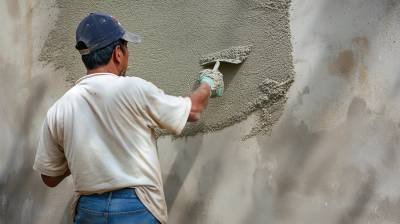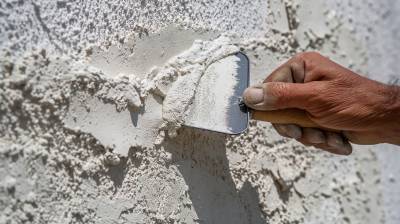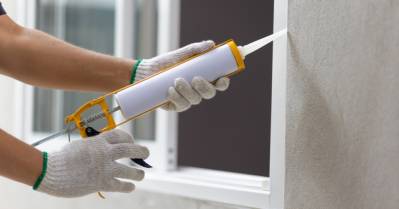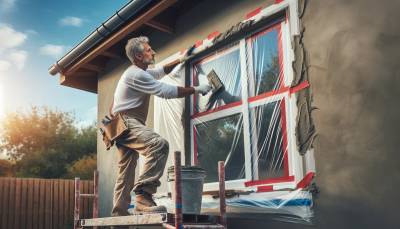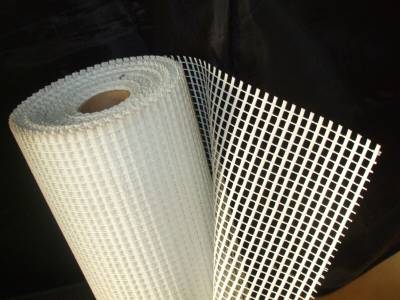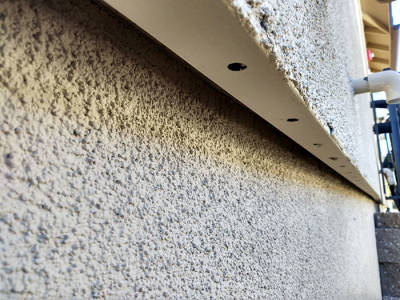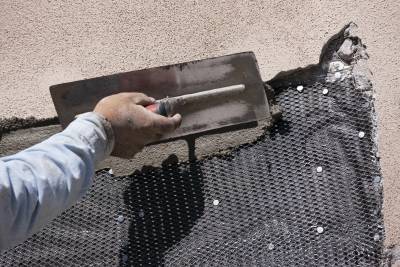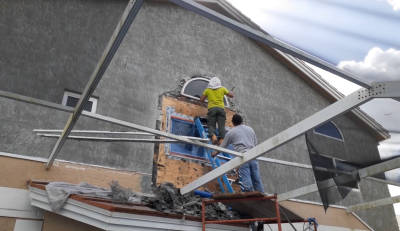Understanding the fundamentals of exterior stucco, including weep screeds, is crucial for homeowners and construction professionals alike. This seemingly small element often gets overlooked, but its importance in providing a pathway for water expulsion cannot be overstated. A well-installed weep screed can preserve your building's integrity, thus preventing costly repairs in the future. This article will extensively discuss weep screeds, exploring their functions, types, installation process, and common related issues. Our focus will be on highlighting why weep screed is considered a critical part of wall construction and stucco application.
The Essence of Weep Screed
Weep screed, also known as a drainage screed, is a type of flashing installed along the bottom of an exterior stucco wall. It serves as the termination point for stucco, allowing excess moisture to escape from behind the stucco, thus preventing it from damaging the walls of the building. By promoting efficient drainage and evaporation, weep screed helps maintain the health and longevity of your home or commercial property.
The Importance of Weep Screed
- Mold prevention: By allowing accumulated moisture to escape, weep screeds help to prevent the growth of mold and mildew.
- Structural durability: Preventing moisture damage to the wooden or metal elements on the walls, thus enhancing the building's durability over time.
- Regulatory compliance: Building codes often require the use of weep screeds, particularly in areas with high rainfall.
Types of Weep Screeds
There are different types of weep screeds available on the market, with each suitable for specific applications. These types include:
- PVC Weep Screed: This is a popular type due to its easy installation process and cost-effectiveness.
- Metal Weep Screed: Manufactured from galvanized metal, this type is ideal for high-moisture environments due to its enhanced durability.
- Vented Weep Screed: This weep screed type features slits or holes, thus offering superior ventilation and moisture expulsion.
Choosing the Right Weep Screed
Selecting the right type of weep screed will largely depend on your building's specific needs, the local climate, and regulatory requirements. It's always wise to consult with a professional to make the most optimal choice.
Installation of Weep Screed
The correct installation of a weep screed is crucial to its effective functioning. It is typically attached to the wall using nails or screws before applying the stucco. It should be slanted outward to enable water to be easily expelled. Additionally, it must lay at the right level above the ground to ensure maximum efficiency.
Steps to a Proper Weep Screed Installation
- Start by measuring and cutting the weep screed to match the length of your wall.
- Next, attach the screed to the wall's bottom, ensuring it is level and secure.
- Apply a water-resistant barrier or building paper over the screed and the wall.
- Lastly, the stucco can be applied over this setup, covering all but the weep holes on the screed.
Common Weep Screed Issues and Solutions
Despite the ease of installation and maintenance, weep screed can present certain challenges. One common issue is blockage of the screed holes due to debris or stucco application. This disrupts the moisture expulsion process, leading to water pooling and potential mold growth. Regular cleaning, using a stiff brush, and ensuring proper stucco application can prevent this issue.
Another common problem is damage or detachment caused by physical impact or poor installation. Regular inspections can help detect these issues early, and prompt repairs will ensure continuous effective functioning of your weep screed.
Weep screed plays an essential role in the durability and longevity of your building, especially in areas with stucco wall finishing. By providing proper and efficient water drainage, this humble component prevents damage, prevents mold growth, and contributes to a healthier living environment.
Weep Screed Frequently Asked Questions
Can I install weep screed by myself?
While it is technically possible to install a weep screed yourself, it's recommended to hire professionals. The process requires precision and an understanding of building regulations. Professionals have the necessary tools and skills to ensure the weep screed is installed correctly and safely.
What type of material is used for making weep screed?
Weep screeds are usually constructed from durable, corrosion-resistant materials like stainless steel, copper, or PVC. The choice of material may depend on your local building codes and environmental factors.
Where is the weep screed located on my home?
A weep screed is typically installed at the base of the exterior wall of your home. It is found along the foundation line and is designed to collect water that has passed through the wall and then direct it away from the home.
How can I maintain my weep screed to ensure longevity?
Maintaining a weep screed involves regularly checking and cleaning it to prevent clogging by debris such as leaves, dust, or insect nests. You can use a small brush or a high-pressure air pressure gun for cleaning. Regular inspection will also catch any signs of corrosion or damage that may need repair.
Why would a building inspector flag an issue with my weep screed?
Building inspectors may flag weep screed issues if the installation isn't compliant with local building codes, if the screed is damaged or corroding, or if it's blocked preventing it from weeping water efficiently. Incorrect installation or urgent repair requirements could cause an inspector to flag it during the inspection.
How often should the weep screed be replaced?
The lifespan of a weep screed largely depends on its maintenance and the material used. Regular inspection and maintenance can prevent the need for frequent replacements. However, if there's considerable damage, especially due to corrosion, replacement is necessary. It's best to consult with a professional to reach a decision.
Does every type of siding require a weep screed?
While the necessity of a weep screed can depend on local building codes, it’s primarily required when using stucco siding. Other types of siding, like wood or fiber-cement, do not typically require weep screed, but depending on your specific situation, a weep screed may still be useful for effective moisture management.
What should I do if my weep screed is blocked?
If your weep screed is blocked by debris such as dirt or leaves, it's important to clean it as soon as possible to ensure it functions properly. You can use a soft brush or spray of water to clear the blockage. If your weep screed is constantly getting blocked, you may want to consider landscaping adjustments or regular maintenance solutions.
Can I paint over a weep screed?
Technically, yes, but it's not always advisable to paint over a weep screed. Paint can block the holes through which the moisture escapes, rendering it ineffective and potentially causing moisture-related damage over time.
Pros and Cons of Weep Screed
Pros of using Weep Screed
Provides Efficient Drainage
A major pro of weep screed is its ability to ensure efficient water drainage away from the walls of a building structure. This advantage of weep screeds is perhaps the most crucial, as preventing water accumulation crucially safeguards the structural integrity and longevity of a building.
- Weep screeds serve as the lowest diversion point for water, directing it away from the stucco and other internal structures.
- This ensures the dryness and stability of the structural framework, preventing dampness that could engender the growth of mold or the weakening of wooden structures.
Mandatory in Building Codes
Weep screeds enjoy a prescribed role in building construction as most building codes demand their inclusion in the construction design.
- This mandatory requirement is an affirmation of the crucial role they play in maintaining the integrity of a building.
- So, in essence, using a weep screed isn't just a good practice, but a legislated one – making it an essential component of a building project.
Promotes Durability of the Structure
Weep screeds contribute to the durability of a building by affording protection to the stucco against water damage.
- Without a weep screed, water can easily seep into the stucco, prompting an expansion that could lead to damage.
- By channelling the water away, the weep screeds prevent this occurrence, thus contributing to the durability of the structure.
Cons of using Weep Screed
Can Be Difficult to Install
A common downside related to the use of weep screed is its demand for a precise installation.
- Weep screeds must be installed at a correct angle and height, thus demanding accurate measurements and high levels of precision, which may prove challenging for unseasoned workers.
- Incorrect installation can adversely affect the drainage and may lead to water accumulation within the structure.
Susceptibility to Damage
Weep screeds, in their function as the lowest part of a building, are often susceptible to damage by a variety of factors.
- Environmental conditions, such as snow and rainfall, can exert pressure on the weep screed and potentially damage it over time.
- Other external factors include physical trauma like being hit or dented or blockages from dirt or insects that can hamper its drainage operation.
Replacement Challenges
The need for weep screed replacement can present daunting challenges.
- Replacing a weep screed may necessitate removing large sections of the stucco – a laborious and potentially expensive task.
- Moreover, a poor replacement job can result in the reoccurrence of the issue that necessitated the replacement in the first place.
Summary
Weep screed is an impressive feature to have in any stucco wall installation. It gives an escape route for any trapped moisture, reducing any potential damage. It also avoids any growth of mold or mildew. Long story short, weep screed is your wall's insurance policy against water damage and all the costs that can entail.
Weep screed is also a must-have in many places. Yes, you heard it right. The International Residential Code mandates its inclusion in almost all stucco houses. It's mainly to control water drainage and upshot building longevity. So, it’s not just a matter of optional improvement, it’s a legal requirement in many cases.
Can you even imagine having to repair water damage regularly? That would not only cost a lot but also become a bothersome chore. So, the importance of weep screed can't be overstated enough. It’s straightforward yet the impact it has in protecting your property and keeping it safe and dry is immense. Pretty cool, isn’t it?
About Atlas Stucco
Welcome to Atlas Stucco, your number one source in Sacramento, CA for all your stucco needs. Anchored in a commitment to quality and distinguished service, we bring decades of experience in not just delivering durable stucco finishes but also in enhancing and accentuating the beauty of your structures. At Atlas Stucco, we combine artistry with reliability, showcasing our brilliance in every project regardless of size or variety. Our high standard of work coupled with our drive for customer satisfaction makes us a go-to stucco company in Sacramento.
Tags: weep screed, stucco installation, drainage,





